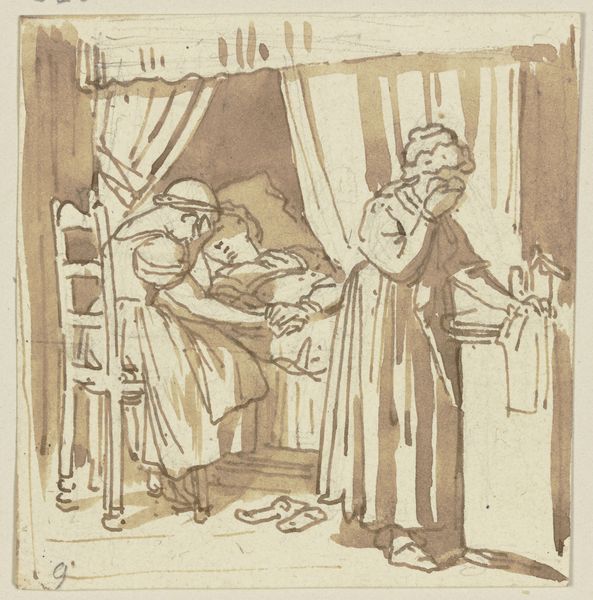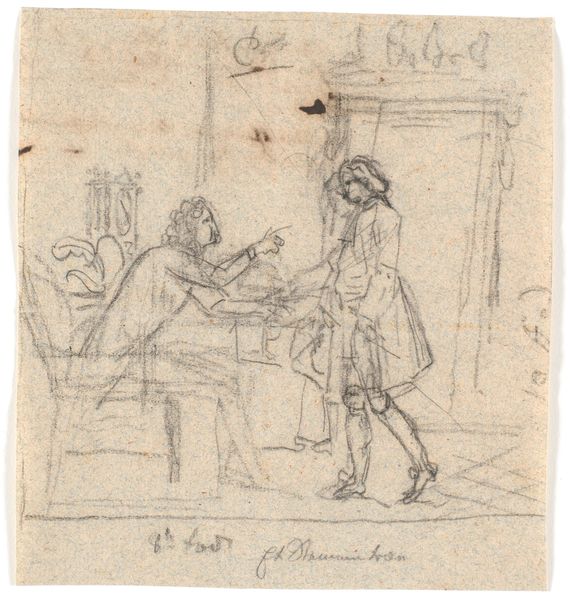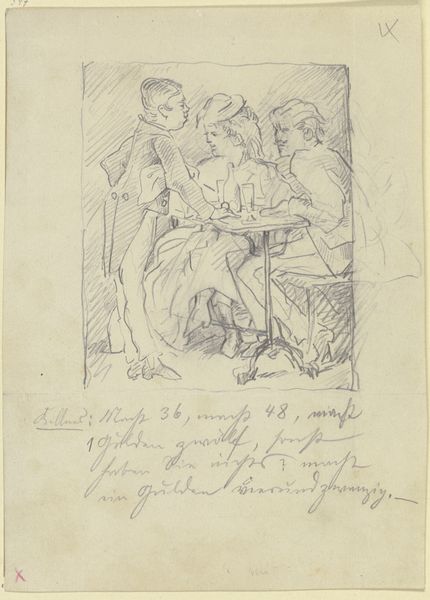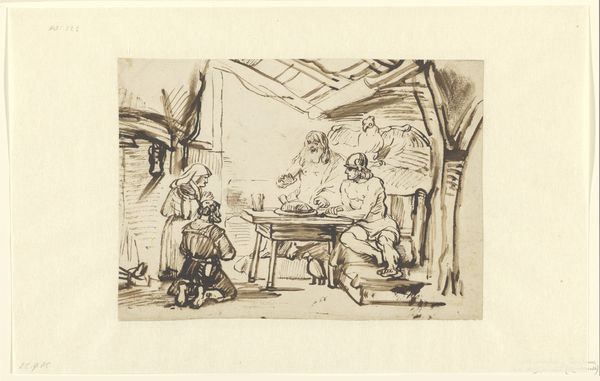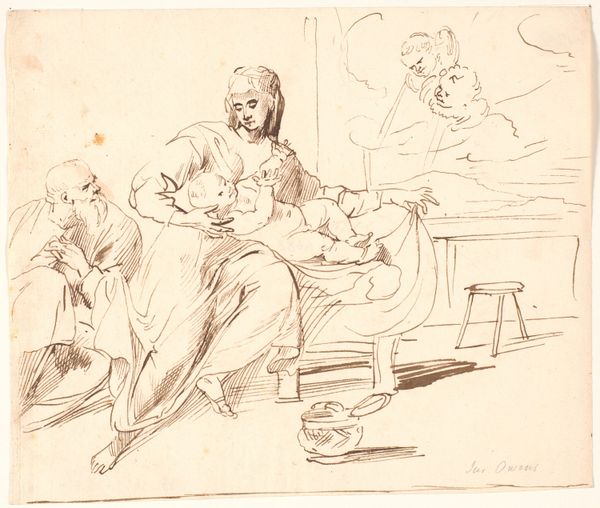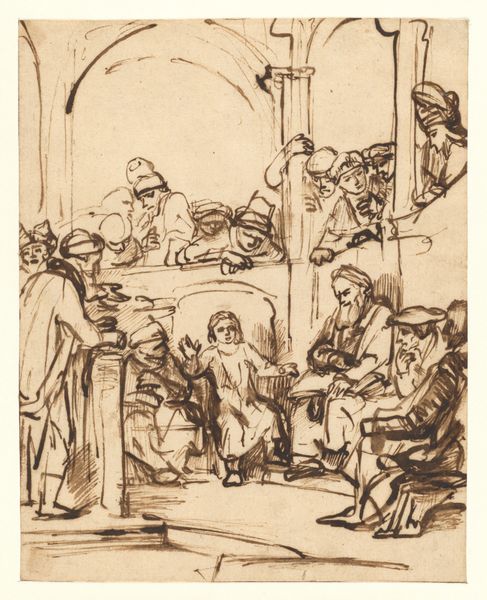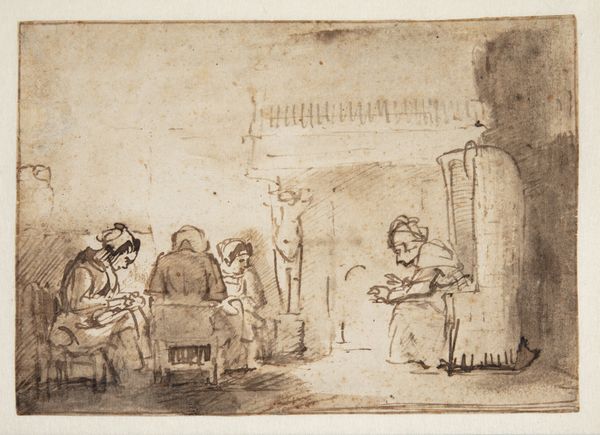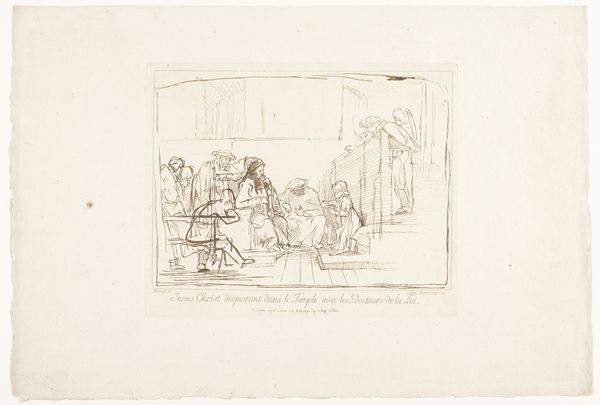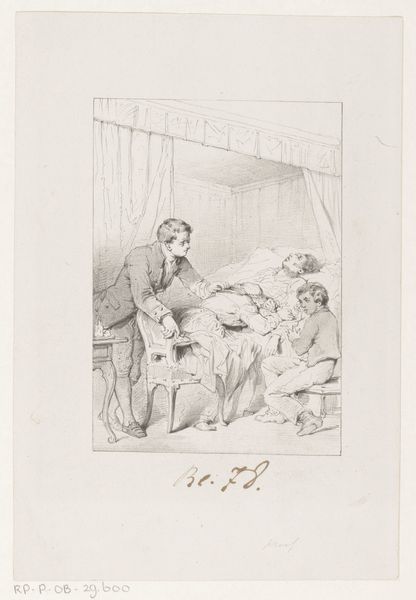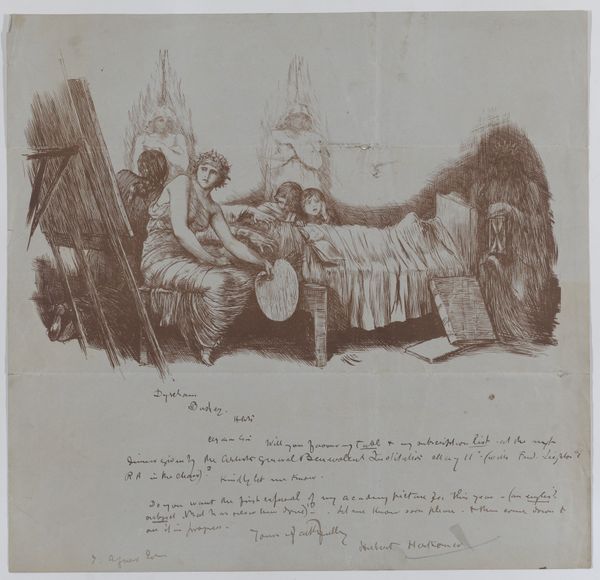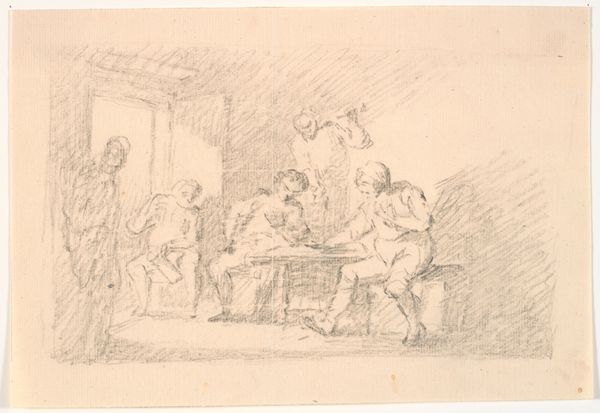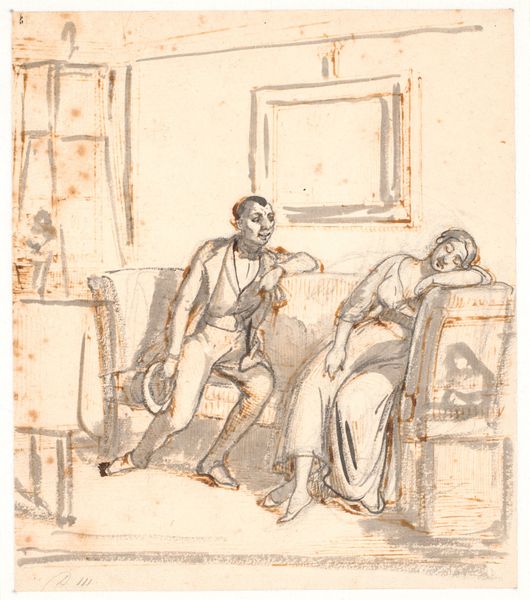
Agrippina beder Tiberius give hende en ægtemand 1743 - 1809
0:00
0:00
drawing, ink
#
drawing
#
figuration
#
ink
#
history-painting
#
nude
Dimensions: 172 mm (height) x 178 mm (width) (bladmaal)
Editor: Here we have Nicolai Abildgaard's ink drawing, "Agrippina beder Tiberius give hende en ægtemand," made sometime between 1743 and 1809. There’s a starkness to the scene; the figures feel very exposed. What strikes you most about this piece? Curator: I am immediately drawn to the complex interplay of power and vulnerability depicted. Abildgaard's choice to represent Agrippina in a state of undress while negotiating with Tiberius invites us to consider the gendered dynamics at play in Roman society and, indeed, mirrored in his own historical moment. Do you notice how the lines are both delicate and decisive? Editor: Yes, the use of ink gives it a sketched feel, like we are seeing a fleeting moment. There’s a real contrast between Agrippina's languid pose and Tiberius's more formal posture. Curator: Precisely. Consider the socio-political context: how does this seemingly intimate scene actually portray the negotiations of power that characterized relations between women and men? What about the act of ‘giving her a husband?’ Is it a gift or an act of strategic control? What implications might this image have had for viewers in the late 18th century, particularly given the rise of revolutionary sentiments and challenges to established hierarchies? Editor: I hadn’t considered the idea of 'giving' a husband that way. I suppose it challenges the idea of female agency, doesn’t it? This makes me rethink the passivity I initially saw in Agrippina's posture. Curator: Exactly! By interrogating those assumptions, we start to unpack the work's deeper engagement with gender, power, and historical representation. Seeing those nuances provides a richer understanding of not only the artwork, but also its relevance within historical narratives and their continued resonance today. Editor: Thank you for offering that context. It’s amazing how much more depth there is when considering historical and gendered implications. I’ll never look at a historical drawing the same way again!
Comments
No comments
Be the first to comment and join the conversation on the ultimate creative platform.
